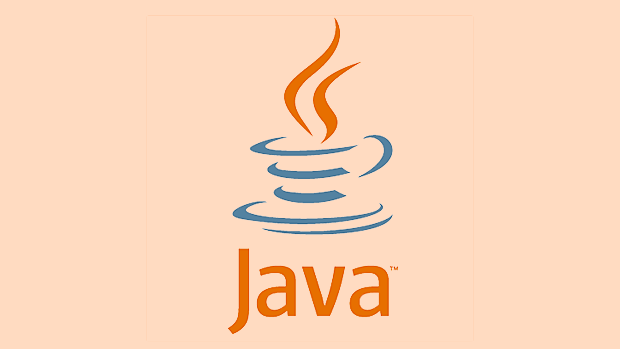ArrayList is suitable for frequent reading and a small amount of addition and deletion, because the array structure supports O(1) random access; LinkedList is suitable for frequent addition and deletion and less access, and the linked list structure is inserted and deleted O(1) but the access is O(n). 1. Random access: ArrayList is faster; 2. Intermediate addition and deletion: LinkedList is better; 3. Memory usage: ArrayList is more friendly; 4. Capacity expansion mechanism: ArrayList automatically grows by 50%, and there is no capacity expansion problem for LinkedList. According to the scene selection, non-thread safety needs to pay attention to concurrent processing.

ArrayList and LinkedList are both commonly used List implementation classes in Java, but their performance differences are quite obvious and the applicable scenarios are also different. Simply put: ArrayList is suitable for frequent reading and a small amount of addition and deletion; LinkedList is more suitable for frequent addition and deletion and less random access .

Random access efficiency varies greatly
The underlying ArrayList is implemented by an array, so accessing elements based on the index is very fast, and the time complexity is O(1).
LinkedList is a linked list structure, and each access must be traversed from the beginning or the end. The average time complexity is O(n), and the later the access, the slower it is.

For example:
- If you often use
get(index)to check the data in the middle position, ArrayList is obviously faster. - So if your application is mainly "check", it is more appropriate to choose ArrayList.
Which one is better in insertion or deletion?
It depends on the insertion location:

- Insert/delete in the head or in the middle : LinkedList performs better, you only need to modify the pointers of the front and rear nodes, and the time complexity is O(1) (provided that the position has been positioned).
- And at the tail operation : the two are similar, ArrayList may be slightly better because there is no linked list pointer operation overhead.
Conversely, ArrayList needs to move a large number of elements when inserting, especially when inserting at the intermediate position, the time complexity is O(n), and the efficiency is significantly reduced.
So if your program often adds and deletes operations in the middle of the list, such as dealing with a constantly changing queue or task list, then LinkedList is more suitable.
Memory usage and capacity expansion mechanism
ArrayList will reserve some space and automatically expand when the capacity is insufficient, with a default growth of 50%. Although the capacity expansion is a bit overhead, it is not frequent and overall controllable.
Each node of LinkedList needs to save additional references from the predecessor and subsequent references, which consumes more memory, especially when the data volume is large.
This also means:
- When the data volume is small and the operation is frequent, LinkedList may not necessarily be the advantage;
- When the data volume is large and query-based, the memory utilization of ArrayList is more friendly.
Summary of usage suggestions
- Read more and write less → Use ArrayList
- Frequently add and delete in the middle → Use LinkedList
- Memory sensitive → Consider ArrayList
- Need high concurrency modification → Or consider other thread-safe structures, neither of which are thread-safe
Basically, there are only these differences. Which one you choose depends on your specific usage scenario, not a question of who is stronger and who is weak.
The above is the detailed content of Comparing ArrayList and LinkedList performance characteristics in Java.. For more information, please follow other related articles on the PHP Chinese website!

Hot AI Tools

Undress AI Tool
Undress images for free

Undresser.AI Undress
AI-powered app for creating realistic nude photos

AI Clothes Remover
Online AI tool for removing clothes from photos.

Clothoff.io
AI clothes remover

Video Face Swap
Swap faces in any video effortlessly with our completely free AI face swap tool!

Hot Article

Hot Tools

Notepad++7.3.1
Easy-to-use and free code editor

SublimeText3 Chinese version
Chinese version, very easy to use

Zend Studio 13.0.1
Powerful PHP integrated development environment

Dreamweaver CS6
Visual web development tools

SublimeText3 Mac version
God-level code editing software (SublimeText3)

Hot Topics
 Difference between HashMap and Hashtable?
Jun 24, 2025 pm 09:41 PM
Difference between HashMap and Hashtable?
Jun 24, 2025 pm 09:41 PM
The difference between HashMap and Hashtable is mainly reflected in thread safety, null value support and performance. 1. In terms of thread safety, Hashtable is thread-safe, and its methods are mostly synchronous methods, while HashMap does not perform synchronization processing, which is not thread-safe; 2. In terms of null value support, HashMap allows one null key and multiple null values, while Hashtable does not allow null keys or values, otherwise a NullPointerException will be thrown; 3. In terms of performance, HashMap is more efficient because there is no synchronization mechanism, and Hashtable has a low locking performance for each operation. It is recommended to use ConcurrentHashMap instead.
 What are static methods in interfaces?
Jun 24, 2025 pm 10:57 PM
What are static methods in interfaces?
Jun 24, 2025 pm 10:57 PM
StaticmethodsininterfaceswereintroducedinJava8toallowutilityfunctionswithintheinterfaceitself.BeforeJava8,suchfunctionsrequiredseparatehelperclasses,leadingtodisorganizedcode.Now,staticmethodsprovidethreekeybenefits:1)theyenableutilitymethodsdirectly
 How does JIT compiler optimize code?
Jun 24, 2025 pm 10:45 PM
How does JIT compiler optimize code?
Jun 24, 2025 pm 10:45 PM
The JIT compiler optimizes code through four methods: method inline, hot spot detection and compilation, type speculation and devirtualization, and redundant operation elimination. 1. Method inline reduces call overhead and inserts frequently called small methods directly into the call; 2. Hot spot detection and high-frequency code execution and centrally optimize it to save resources; 3. Type speculation collects runtime type information to achieve devirtualization calls, improving efficiency; 4. Redundant operations eliminate useless calculations and inspections based on operational data deletion, enhancing performance.
 What is an instance initializer block?
Jun 25, 2025 pm 12:21 PM
What is an instance initializer block?
Jun 25, 2025 pm 12:21 PM
Instance initialization blocks are used in Java to run initialization logic when creating objects, which are executed before the constructor. It is suitable for scenarios where multiple constructors share initialization code, complex field initialization, or anonymous class initialization scenarios. Unlike static initialization blocks, it is executed every time it is instantiated, while static initialization blocks only run once when the class is loaded.
 What is the Factory pattern?
Jun 24, 2025 pm 11:29 PM
What is the Factory pattern?
Jun 24, 2025 pm 11:29 PM
Factory mode is used to encapsulate object creation logic, making the code more flexible, easy to maintain, and loosely coupled. The core answer is: by centrally managing object creation logic, hiding implementation details, and supporting the creation of multiple related objects. The specific description is as follows: the factory mode handes object creation to a special factory class or method for processing, avoiding the use of newClass() directly; it is suitable for scenarios where multiple types of related objects are created, creation logic may change, and implementation details need to be hidden; for example, in the payment processor, Stripe, PayPal and other instances are created through factories; its implementation includes the object returned by the factory class based on input parameters, and all objects realize a common interface; common variants include simple factories, factory methods and abstract factories, which are suitable for different complexities.
 What is the `final` keyword for variables?
Jun 24, 2025 pm 07:29 PM
What is the `final` keyword for variables?
Jun 24, 2025 pm 07:29 PM
InJava,thefinalkeywordpreventsavariable’svaluefrombeingchangedafterassignment,butitsbehaviordiffersforprimitivesandobjectreferences.Forprimitivevariables,finalmakesthevalueconstant,asinfinalintMAX_SPEED=100;wherereassignmentcausesanerror.Forobjectref
 What is type casting?
Jun 24, 2025 pm 11:09 PM
What is type casting?
Jun 24, 2025 pm 11:09 PM
There are two types of conversion: implicit and explicit. 1. Implicit conversion occurs automatically, such as converting int to double; 2. Explicit conversion requires manual operation, such as using (int)myDouble. A case where type conversion is required includes processing user input, mathematical operations, or passing different types of values ??between functions. Issues that need to be noted are: turning floating-point numbers into integers will truncate the fractional part, turning large types into small types may lead to data loss, and some languages ??do not allow direct conversion of specific types. A proper understanding of language conversion rules helps avoid errors.
 What is synchronization?
Jun 24, 2025 pm 08:21 PM
What is synchronization?
Jun 24, 2025 pm 08:21 PM
Synchronizationistheprocessofcoordinatingtwoormorethingstostayaligned,whetherdigitalorphysical.Intechnology,itensuresdataconsistencyacrossdevicesthroughcloudserviceslikeGoogleDriveandiCloud,keepingcontacts,calendarevents,andbookmarksupdated.Outsidete






